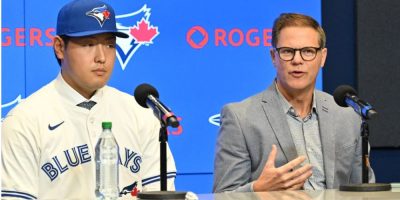
By Allison Jones in Toronto
Ontario's autism program has undergone four major revamps in the past six years, and has seen five different ministers in charge, and Alina Cameron just wants her daughter's over four-and-a-half year wait for treatment to be done.
Fiona, 7, has been on the wait list for government-funded therapy since Oct. 30, 2017. Her family has managed to cobble together some treatment, paying out of pocket for part-time therapy, but nowhere near the amount she has been clinically prescribed, Cameron said.
"What our family really needs is access to the core therapy program," she said. "We're waiting for the golden ticket."
Three of Ontario's major political parties are proposing changes to the province's autism services, aimed at remedying what they see as the mistakes with the current program.
The Progressive Conservatives' second attempt at an autism program is designed to be needs-based and with a doubled budget of $600 million a year, but the roll-out has been delayed, leaving tens of thousands of children still waiting for core services. Families also say there are still elements of the program that leave it short of funding therapy based truly on need.
The NDP say, if elected, they would change the program to ensure there are no funding caps, including those based on age, and are pledging to boost the program's budget by an additional $125 million by 2024-25.
"It is despicable what's been happening to children and their families, children with autism and their families, for a long time now," said NDP Leader Andrea Horwath.
"What we are saying to these families is we are going to design a program with you that meets the needs of your children, that doesn't have artificial age caps on it, that doesn't have artificial standards that are having to be met. Children should be getting the services that they need based on their needs."
The Liberals also say they would remove any age-based determinants from the program and implement a direct billing option while working within the existing budget if elected.
"I've had the chance before becoming leader and since becoming leader to hear directly from families that are struggling so much because of the promises that were made but were not kept by the Ford conservatives on dealing with autism supports and services," Liberal Leader Steven Del Duca said.
"So I am very comfortable based on all of the research that we've done, including collaborating with those who are on the front lines who are struggling in this regard, that what we've included in our plan, our fully costed plan, will get us to where we need to be."
The Greens say they would boost funding for the autism program and establish an "ultimate wait time benchmark" for diagnosis and access to core services.
Progressive Conservative Leader Doug Ford said he will always support the autism community, and he also wants to look into additional supports for adults with autism.
"What I'm hearing out there, and I'm hearing it more and more, and I have heard it for the last four years...as the parents are getting older, they're concerned on who's going to take care of their adult (children) with autism," Ford said.
But the Ontario Autism Coalition says Ford's party has engendered a lot of mistrust due to its failed initial program and subsequent delays with the new one.
"Everything they did was just stall, and any deadlines that they set for themselves, they hadn't met," said president Angela Brandt.
Parents of children with autism burst into tears at the legislature in December of 2019 when the minister in charge announced the new needs-based program would be phased in over two years instead of being up and running in April 2020.
Currently, the government has enrolled 858 kids into core clinical services – in addition to more than 3,600 children that were grandfathered in from the previous Liberal program – and has said it anticipates boosting that number to 8,000 by the fall.
But there are more than 53,000 children registered in the program. The government disputes the autism community's framing of that number, saying it doesn't represent the waitlist because about 40,000 kids have received something.
Cameron said her daughter is one of those 40,000 children, having most recently received $5,000 in one-time funding. The full cost of behavioural services she has been prescribed is $93,000, Cameron said.
"I get really upset about that, because they count us as one of the families getting support and I can tell you right now, I am funding everything out of my own pocket," said Cameron, who lives just outside Thunder Bay.
"We're buying what we can, which is about part-time and it's financially breaking us. We don't do anything fancy, we budget, we do everything we can to keep that spot because especially in northern, rural and remote locations, if you are lucky enough to secure a spot, you don't want to let that go because you never know when you'll get back in."
Issues with the Ontario Autism Program and its waitlist go back farther, but in 2016 the Liberal government at the time sparked outrage when it decided to stop funding intensive therapy for children five and older. A wave of protests ensued, and one new minister and one new program later, the age cap was gone.
But it meant that the waitlist also grew, reaching 23,000 by the time the Progressive Conservative government went into power.
While many parents said they were content for their children to wait for two or more years knowing at the end they would get access to the proper amount of therapy, the new PC minister in charge said it was unacceptable for kids to be languishing on that list and announced a new program.
The idea was to "clear the waitlist," but the program would do so by giving families either $20,000 or $5,000 to pay for therapy, depending on the age of the child. Intensive therapy can cost much more and families were once again outraged. Services to help their children learn and develop basic skills were being determined by age, not need, and in numbers too small to amount to anything meaningful.
Government officials have said the new program funds new areas the previous ones didn't, such as speech language pathology, and the intake assessment will look at 10 "domains of need." Funding amounts are capped based on four different age categories.
This report by The Canadian Press was first published May 25, 2022.






